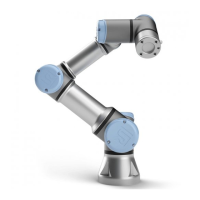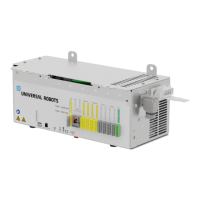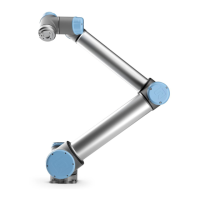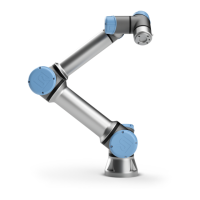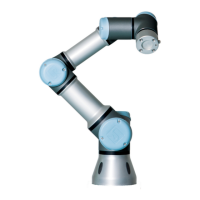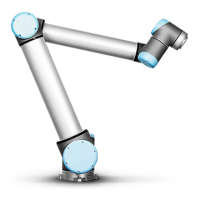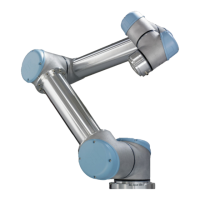1.7 Risk Assessment
Identifying the correct safety configuration settings is a particularly important part
of developing collaborative robot applications. See chapter 2 and Part II for detailed
information.
Some safety-related features are purposely designed for collaborative robot appli-
cations. These features are configurable though the safety configuration settings
and are particularly relevant when addressing specific risks in the risk assessment
conducted by the integrator:
• Force and power limiting: Used to reduce clamping forces and pres-
sures exerted by the robot in the direction of movement in case of collisions
between the robot and the operator.
• Momentum limiting: Used to reduce high transient energy and impact forces
in case of collisions between robot and operator by reducing the speed of the
robot.
• Joint and TCP position limiting: Particularly used to reduce risks
associated with certain body parts. E.g. to avoid movement towards head and
neck during set-up and programming.
• TCP and tool orientation limiting: Particularly used to reduce risks
associated with certain areas and features of the tool and work-piece. E.g. to
avoid sharp edges to be pointed towards the operator.
• Speed limitation: Particularly used to ensure a low speed of the robot
arm. E.g. to provide time for the operator to avoid contact with the robot arm.
Applying the correct safety configuration settings is considered equivalent to bolt-
ing the robot into place and connecting safety-related equipment to safety-related
I/Os. The integrator must prevent unauthorized persons from changing the safety
configuration, e.g. by use of password protection.
When assessing risks in a collaborative robot application, it is particularly impor-
tant to cover:
• Severity of individual potential collisions;
• Likeliness of occurrence of individual potential collisions;
• Possibility to avoid individual potential collisions;
If the robot is installed in a non-collaborative robot application where hazards can-
not be reasonably eliminated or risks cannot be sufficiently reduced by use of the
built-in safety-related functions (e.g. when using a hazardous tool), then the risk
assessment conducted by the integrator must conclude that the integrator needs to
add additional protective measures (e.g. an enabling device to protect the integra-
tor during set-up and programming).
Universal Robots has identified the potential significant hazards listed below as
hazards which must be considered by the integrator. Note that other significant
hazards might be present in a specific robot installation.
1. Entrapment of fingers between robot foot and base (joint 0).
2. Entrapment of fingers between wrist 1 and wrist 2 (joint 3 and joint 4).
UR5/CB3 I-8 Version 3.4.5
Copyright © 2009–2017 by Universal Robots A/S. All rights reserved.
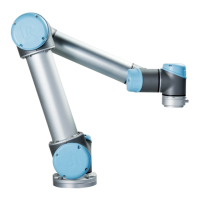
